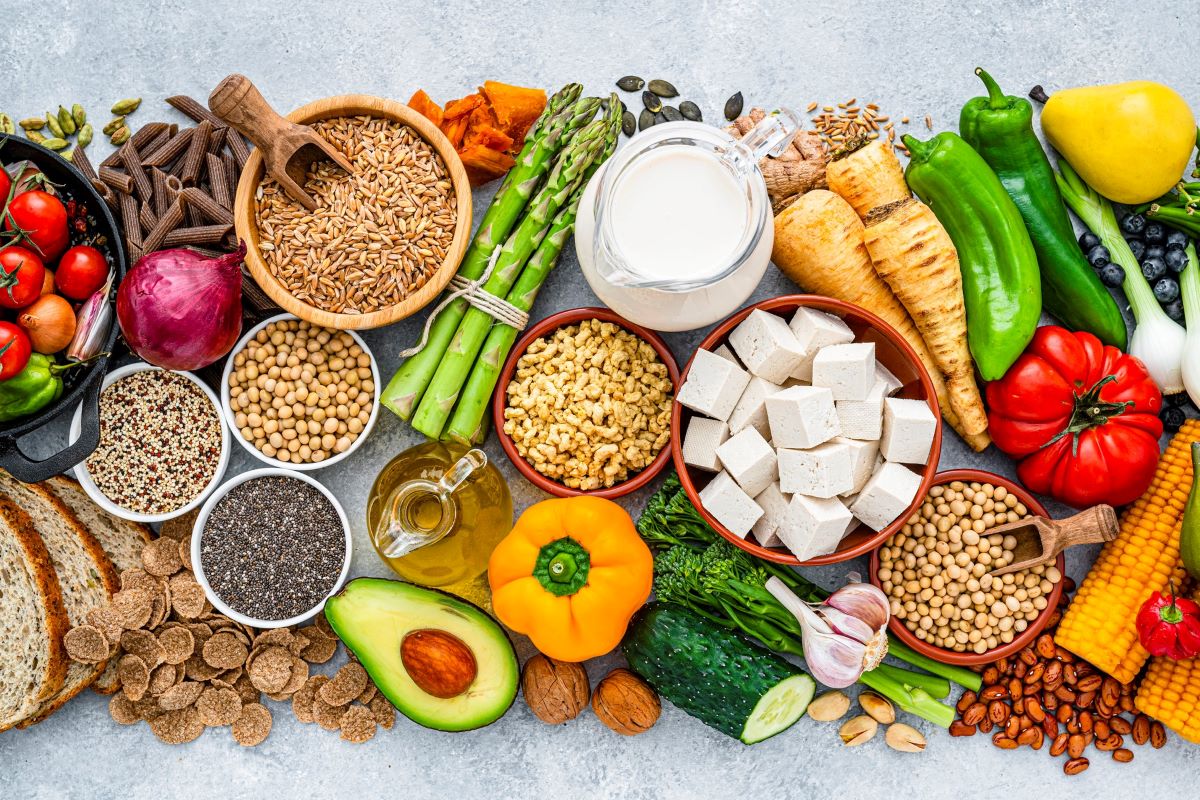
A healthy lifestyle centers on making healthy choices.
Consuming a balanced diet of nutrient-dense foods can help give you the energy you need and prevent conditions like diabetes, heart disease, hypertension, stroke and cancer.
Here are 10 tips for making healthy food choices each day.
- Choose a variety of fruits and vegetables, including the colors of the rainbow — dark green, red, blue-purple, yellow and orange. Examples include spinach, kale, collard greens, tomatoes, red peppers, eggplant, squash and carrots. Aim for 2
½ or more servings of vegetables a day, with one serving equaling ½ cup cooked or 2 cups raw leafy vegetables. Aim for two servings of fruit daily, with one serving equaling one medium fruit or ½ cup chopped raw fruit or canned
fruit in its own juice.
- The American Heart Association (AHA) recommends 5 ½-ounce equivalents of plant protein or fish/seafood daily. This includes 5 ounces per week of nuts, seeds, beans, peas or lentils, and 6-8
ouncesper week of seafood, preferably oily fish like salmon. Examples of plant-based protein sources are soy, tofu, beans, peas, lentils, nuts and nut butters. Limit red meat and avoid processed meats such as bacon, sausage and ham.
- Include six servings of grains daily, with half being whole grains rather than refined (white). Examples include one slice of whole wheat bread, or ½ cup of brown rice or whole wheat pasta.
- Incorporate three servings daily of low-fat or fat-free dairy — 1%, skim milk or calcium-fortified soy milk and low-fat/no sugar-added yogurt. One serving equals 1 cup of milk or yogurt or 1 ounce of cheese.
- Reduce salt intake by using salt-free seasonings, herbs, spices and sauces. Limit eating out; rather, cook meals at home without salt and choose lower sodium or “no salt added” options when grocery shopping.
- Be aware of added sugars, used to sweeten foods and drinks. They do not have any nutritional value. Examples include high fructose corn syrup, corn syrup, dextrose, maple syrup, white sugar, brown sugar, molasses and honey. Aim for ≤ 5% of added
sugars based on the Nutrition Facts Label, with recommended limits of no more than 6 teaspoons/day for women and 9 teaspoons/day for men. Note: 4g = 1 teaspoon.
- Limit how much sugar you eat in a day. Sugar is found in jelly, fruit juice, fruit juice concentrate, sauces, dressings, condiments, pasta sauces, soft drinks, energy drinks, snack foods, cereals, and candy.
- Choose healthy fats, opting for liquid vegetable oils like canola, sunflower, avocado and olive oils. Avoid tropical oils (coconut, palm and palm kernel) and animal fats (lard and butter). Limit fats and oils to 3 tablespoons/day, with one serving
to equal 1 tablespoon of vegetable oil or soft margarine, low-fat mayonnaise, or light salad dressing.
- Limit high-fat foods — pastries, fried food, fast food, frozen pizza, pies, cake, cookies, donuts and pastries.
- Opt for healthier cooking methods. Broil, roast, bake or steam your food instead of deep-frying.
One ounce of plant-based protein equals:
– ¼ cup cooked beans, peas or lentils.
– ¼ cup or 2 ounces of tofu.
– ½ ounce nuts or seeds, or 1 tablespoon peanut butter.
In summary, a healthy balanced diet consists of fresh fruits and vegetables, whole grains, low-fat dairy, plant-based proteins and fats, limited added sugars and high sodium foods, and healthier cooking methods.
Embracing a healthy lifestyle is a journey that profoundly impacts long-term health.

